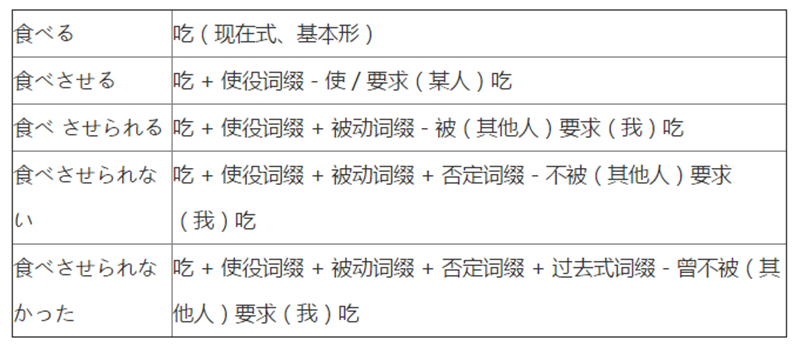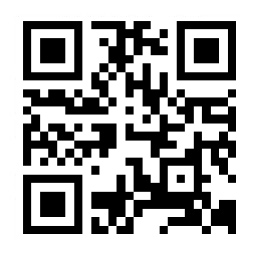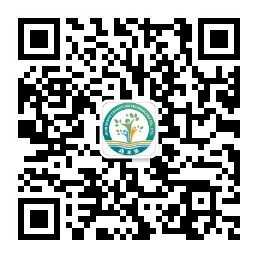


(Summary description)
(Summary description)
There are 134 million native speakers of Japanese in the world, the largest number in the world.
The number of people who learn Japanese as a second language is also increasing year by year. The number of applicants for the Japanese language proficiency test JLPT for learners whose mother tongue is not Japanese exceeded one million again last year.
So, what kind of language is the increasingly popular Japanese?
Adhesive language, to achieve grammatical function by pasting different endings on nouns, verbs and other endings. Generally speaking, all the affixes of sticky words express only one meaning or have only one grammatical function.
Take the Japanese word 食べる (eat) as an example:

Paste different suffixes on the back of 食べる, and it becomes a different state and meaning, which can be summarized as five elements of action, passive, negation, past, tone.
From writing, Japanese is a mixture of Kanji and Kana
Kana is a unique phonetic alphabet in Japan, mainly Hiragana and Katakana.

Although ancient Japan had its own language, it had no words. After the introduction of Chinese characters, the Japanese began to record in Chinese characters. Afterwards, Japan invented the Wanye pseudonym to make up for the deficiency of marking Japanese with Chinese characters. The writing of Wanye pseudonym gradually simplified and became the pseudonym we see now.
Hiragana (ひらがな, Hiragana) evolved from cursive writing of Chinese characters. Katakana (Katakana, Katakana) is a simplified Chinese character radical extracted from the regular script of Chinese characters. It was invented in the early Heian era for the training of Chinese characters. The present pseudonym shape was determined during the Meiji era when the Japanese government compiled the 50th note.
As the Japanese writing system matures and develops, Chinese characters are now used in most nouns, adjectives, and verbs, while Hiragana is used to write verb endings, pure Japanese vocabulary, or vocabulary that is difficult to write in Chinese characters. Hiragana is also used to mark the pronunciation of Japanese Kanji (Virtual Kana), and books intended for people with insufficient Chinese characters, such as books for children and Japanese learners. Katakana is used for onomatopoeia and loanwords due to its square structure. Katakana's habit of writing loanwords has a late origin, but now there are many loanwords that are replacing common words. Some linguists estimate that one-third of the commonly used Japanese today are foreign languages and Japanese.
Chinese characters in Japanese are divided into phonetic reading and training reading. Most of the Chinese characters in Japanese have pronunciation and training second reading.
pronunciation pronunciation refers to the pronunciation originating from China, which is similar to the pronunciation of Chinese characters in Chinese. It can be subdivided into 3 categories: Wu Yin, Han Yin and Tang Yin. Example: Candidacy (ざんねん)
Training reading is a method of reading Chinese characters that is not related to Chinese pronunciation. It is a Chinese character added to mark the original Japanese vocabulary. It can be said to solve the phenomenon that the original Japanese vocabulary has no words. Example: Fruits (くだもの)
The Chinese characters used in China and Japan were originally traditional Chinese characters. But later both countries carried out literary reforms. We simplified some words, but Japan did not; some simplified Japan, we did not. Some words are simplified in both countries, but in different ways. So pay attention to the difference. In addition, there are more than one hundred Chinese characters, which are created by Japanese based on the six books of Chinese characters, "Kuiyi" or "Xingsheng", which is not available in Chinese. Such as 榊 (さかきsakaki, Yang Tong), 畑 (はたけhatake field), Tsuji (つじtsuji intersection) and so on. There are 2136 Chinese characters commonly used in Japanese.
From the word order, the basic structure of Japanese is the subject-object verb of SOV
Let's take a look at a simple sentence.
田中さんはお茶を喝みました。
Tanaka drank tea.
The sentence can be divided into three parts: "田中さんは", "お茶を", and "飲みました".
"田中さんは", "Tanaka" is a noun, which means a person's name (where "Tanaka" is a surname, "さん" is an honorific equivalent of "Mr." or "Ms."; "は" is an auxiliary word. In "お茶を", "お茶" is a noun, meaning "tea"; "を" is an auxiliary word. In addition, "飲みました" is the past tense of the verb "喝".
Japanese is mainly a SOV type arranged in the order of subject, object, and predicate, and the logical relationship is expressed by the connection of auxiliary words between words.
Speaking phonically, Japanese is not accented
Spanish and Italian speakers will find the short vowels in Japanese-a, i, u, e, o pronunciation is very similar to those languages.
Long vowels-aa, ii, uu, ei, ee, or oo are pronounced twice as long as short vowels (although ei is often pronounced with two vowels). The distinction between long and short vowels is critical because it changes the meaning of a word.
Consonants are k, s, sh, t, ch, ts, n, h, f, m, y, r, w, g, j, z, d, b, and p. Friction sh (eg "shoot" in English) and fricatives ch, ts and j (eg "charge", "gutsy" and "jerk" in English, respectively) are considered as single consonants. The pronunciation of g is usually like the voiced consonant in English "game", not the pronunciation of g in "gene".
One major difference between and English is that Japanese has no accented stress: the stress of each syllable is the same. English syllables are sometimes elongated, but in Japanese, a series of syllables are pronounced like a metronome. Like English, Japanese has a high and low tone accent system.
Scan the QR code to read on your phone
Mobile site

The Official Account

Copyright © Jilin Senhe Education Technology Co., Ltd. 吉ICP备20000715号 Website construction:300.cn Changchun